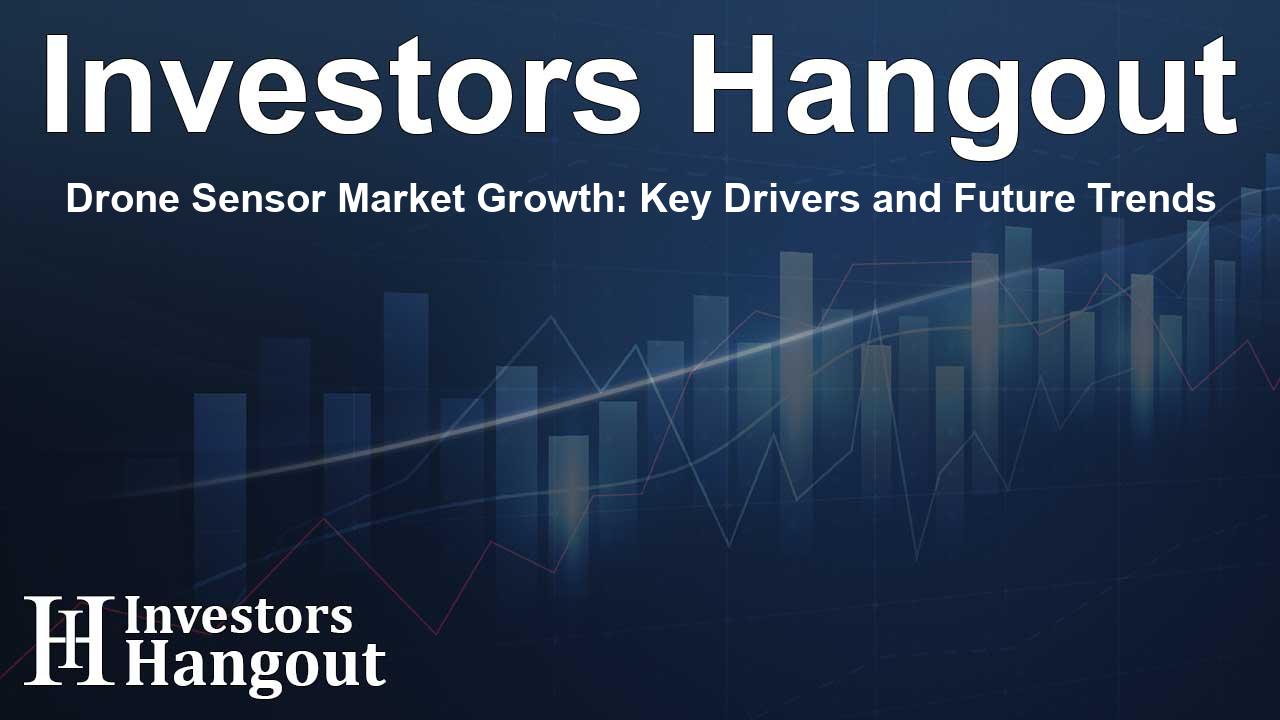Drone Sensor Market Growth: Key Drivers and Future Trends

Overview of the Drone Sensor Market Growth
In recent years, the drone sensor market has witnessed remarkable growth, evolving from a valuation of USD 1.4 billion to a projected USD 4 billion. This upward trend reflects the increasing integration of drone technology across various sectors, including agriculture, construction, and military applications.
Driving Forces Behind Market Expansion
The surge in drone utilization for commercial purposes has been a significant contributor to market evolution. For instance, in agriculture, drones equipped with sophisticated sensors are changing the game by analyzing crop conditions and optimizing treatments. Similarly, in construction, drones facilitate real-time monitoring, enhancing project efficiency and ensuring safety protocols are met.
The Role of Defense Sector
The defense and military sectors represent another crucial driver for the drone sensor market. Drones provide unparalleled support for surveillance, reconnaissance, and intelligence collection. There is a growing demand for advanced sensors that make surveillance more effective, showcasing the rapidly advancing technology that supports military operations.
Advancements in Sensor Technology
One noteworthy trend is the miniaturization of sensors, enabling the integration of multiple advanced technologies into smaller drone models. This innovation boosts the versatility of drones and enhances their ability to perform various tasks efficiently. In industries like agriculture, where vast areas must be covered quickly and accurately, this advancement is particularly vital.
Market Segmentation Insights
The drone sensor market can be segmented based on various factors such as type, platform, application, and end industry. Specifically, the obstacle detection segment is expected to exhibit a compound annual growth rate (CAGR) of over 18% during this forecast period. This segment focuses on sensors that allow real-time obstacle detection, essential for maintaining safety during autonomous operations.
Technological Applications in Drones
Commonly used sensors include LiDAR, ultrasonic, and infrared sensors that help create 3D environmental maps. These technological advancements are crucial not only for package delivery but also for infrastructure inspections and emergency response scenarios, where precise navigation is critical. As drones increasingly operate in urban and crowded environments, the demand for robust obstacle detection systems will continue to rise.
VTOL Segment Growth
The market for Vertical Take-Off and Landing (VTOL) drones is anticipated to generate significant revenue, surpassing USD 1.5 billion by 2032. These drones offer unique capabilities, such as hovering and maneuvering in constrained spaces, making them ideal for diverse applications, from urban logistics to search-and-rescue missions.
Key Features of VTOL Drones
VTOL drones are equipped with specialized sensors including advanced gyroscopes and barometers, which are essential for maintaining stability during vertical operations. Additionally, incorporating advanced navigation systems ensures these drones can navigate complex environments safely and efficiently.
Regional Market Dynamics
In terms of geographic distribution, North America currently holds the largest share of the drone sensor market at over 35%. The region's leadership is attributed to the extensive adoption of drone technology in sectors such as defense, agriculture, and logistics. The United States, in particular, is a leader in advancing drone sensor technology, driven by government support and significant investments in research and development.
Leading Companies in the Drone Sensor Market
Several key players are prominently involved in the drone sensor market, including Teledyne Flir LLC, Trimble Inc., and Velodyne Lidar, among others. These companies are at the forefront of developing cutting-edge sensor technologies that cater to the diverse needs of the industry.
About Global Market Insights
Global Market Insights Inc. is a reputable market research firm based in Delaware, providing comprehensive research reports and strategic insights across various industries. Their thorough analysis and consulting services are tailored to assist organizations in making informed business decisions.
Frequently Asked Questions
What is driving the growth of the drone sensor market?
The growth is primarily driven by the increasing adoption of drones in sectors such as agriculture, construction, and military applications.
How much is the drone sensor market expected to be worth?
By the end of 2032, the drone sensor market is projected to reach a valuation of USD 4 billion.
What types of sensors are commonly used in drones?
Common sensors include LiDAR, thermal sensors, ultrasonic sensors, and cameras for applications like obstacle detection and data collection.
Which region leads in the drone sensor market?
North America is currently the leading region, capturing over 35% of the global market share.
Who are the major players in the drone sensor market?
Major companies include Teledyne Flir LLC, Trimble Inc., and Velodyne Lidar, focusing on developing innovative sensor technologies for drone applications.
About Investors Hangout
Investors Hangout is a leading online stock forum for financial discussion and learning, offering a wide range of free tools and resources. It draws in traders of all levels, who exchange market knowledge, investigate trading tactics, and keep an eye on industry developments in real time. Featuring financial articles, stock message boards, quotes, charts, company profiles, and live news updates. Through cooperative learning and a wealth of informational resources, it helps users from novices creating their first portfolios to experts honing their techniques. Join Investors Hangout today: https://investorshangout.com/
Disclaimer: The content of this article is solely for general informational purposes only; it does not represent legal, financial, or investment advice. Investors Hangout does not offer financial advice; the author is not a licensed financial advisor. Consult a qualified advisor before making any financial or investment decisions based on this article. The author's interpretation of publicly available data shapes the opinions presented here; as a result, they should not be taken as advice to purchase, sell, or hold any securities mentioned or any other investments. The author does not guarantee the accuracy, completeness, or timeliness of any material, providing it "as is." Information and market conditions may change; past performance is not indicative of future outcomes. If any of the material offered here is inaccurate, please contact us for corrections.